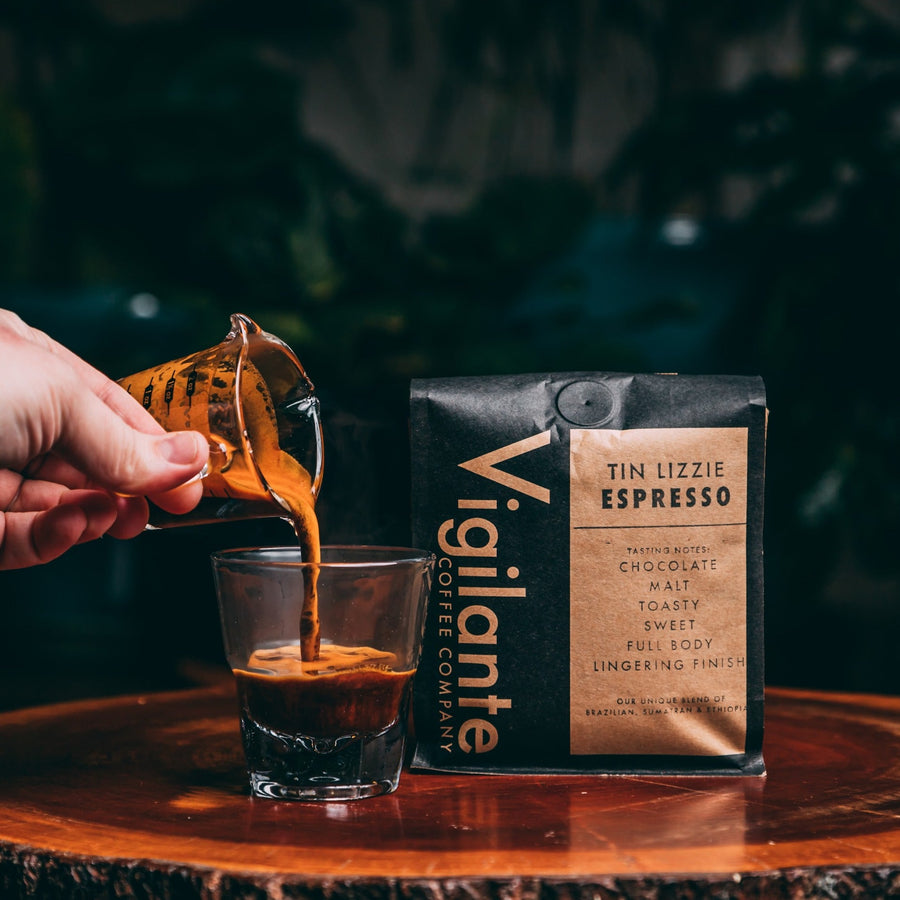Understanding Coffee Beans: the Journey From Espresso to Blended Coffee Beans

The Beginnings of Coffee: A Worldwide Point Of View
While you may think of coffee as a contemporary staple, its origins map back centuries, intertwining with societies around the world. The tale starts in Ethiopia, where legend claims a goat herder named Kaldi found the stimulating impacts of coffee beans after observing his goats romping energetically after consuming them. This stimulated passion, causing coffee's spread to Arab investors that treasured the brewed drink. By the 15th century, it got to Persia, Egypt, and Turkey, where coffeehouses ended up being social centers for discussion and culture.
As profession paths increased, coffee made its method to Europe in the 17th century, promptly gaining popularity. It changed from a mystical drink into an everyday routine, intellectual exchanges and motivating gatherings. Each culture added its unique spin to coffee prep work, enriching its history. This international journey highlights just how coffee connects us, going beyond boundaries and unifying varied customs with a simple bean.
Cultivation and Harvesting of Espresso Beans
As coffee's trip progressed, the emphasis changed to the growing and harvesting of certain bean varieties, specifically those used for coffee. You'll locate that espresso beans typically originate from Arabica or Robusta plants, each offering unique flavors. The excellent expanding problems consist of high altitudes and abundant, well-drained soil, which enhance the beans' top quality.
During the harvest, choosing techniques differ. Timing is crucial; you desire to collect when the cherries get to peak ripeness for optimum flavor.
When collected, the beans are prepared for handling, which is vital in determining their last preference. Comprehending the cultivation and harvesting procedures gives you insight right into what goes into your favorite coffee, enhancing your gratitude for each mug.
Processing Approaches: From Cherry to Bean
Currently that you have actually discovered gathering espresso beans, let's discover exactly how those cherries transform right into the coffee beans you love. You'll see just how different harvesting techniques impact taste, complied with by the necessary steps of fermentation and drying out. Finally, we'll damage down the milling and grading process that identifies your coffee's high quality.
Gathering Methods Clarified
When it comes to coffee, recognizing harvesting strategies is important, since they straight influence the taste and high quality of the beans you take pleasure in. Careful choosing involves hand-picking only ripe cherries, ensuring you obtain the best high quality beans. Inevitably, the option of collecting strategy can significantly affect your coffee experience, so it's worth understanding just how those beans made it to your mug.
Fermentation and Drying Out
After harvesting, the next action in processing coffee beans play a substantial function fit their flavor. You'll locate that fermentation is vital, as it helps damage down the mucilage surrounding the beans, boosting their preference account. Relying on the technique, this process can last from a few hours to a number of days, with varying outcomes based upon temperature and humidity.
As soon as fermentation is total, drying out adheres to, which is similarly crucial. You can select from mechanical or sun-drying drying techniques. Sun-drying permits the beans to take in tastes from the environment, while mechanical drying out guarantees constant moisture levels no matter weather. Correct drying out is vital to avoid mold and preserve the beans' top quality, ultimately affecting your mug of coffee.
Milling and Grading Refine
As fermentation and drying out established the phase for taste growth, the milling and grading process warranties that only the very best coffee beans make it to your cup. This stage involves eliminating the outer layers of the coffee cherry, consisting of the parchment and husk. After milling, the beans are arranged by size and weight, ensuring a consistent top quality. You'll discover that grading aids identify flaws and classify beans, which impacts taste and aroma. Top quality beans get a greater quality, leading to a richer coffee experience. Once graded, the beans are all set for packaging and shipping, protecting their special qualities. This thorough procedure is important for providing the remarkable taste you appreciate in every sip of your favored brew.
Toasting Strategies: Opening Taste Potential
When you roast coffee beans, the method you choose can considerably influence the taste account. Recognizing the partnership in between time, temperature level, and toasting methods is crucial to exposing the capacity of your brew. Allow's check out exactly how these elements come together to create the perfect cup.
Toasting Approaches Clarified
While you could believe that all coffee roasting approaches generate the exact same results, the truth is that each strategy discloses distinct flavor capacities in the beans. You dig this can select between approaches like drum toasting, air roasting, or also standard pan roasting. Drum toasting makes use of a rotating drum to evenly distribute heat, enhancing caramelization and generating a well balanced flavor. Air roasting, on the other hand, flows hot air around the beans, advertising a lighter roast with obvious level of acidity. Pan toasting permits hands-on control yet needs constant focus to prevent burning. Each method has its subtleties, so explore different strategies can assist you discover the best roast that aligns with your preference preferences. Delight in the trip of finding your perfect mug!

Influence On Flavor Account
Various roasting techniques not just influence the procedure but additionally significantly influence the flavor profile of the coffee beans. When you select a light roast, you'll experience brilliant level of acidity and floral notes, showcasing the bean's origin. On the other hand, a tool roast balances acidity with sweet taste, often exposing chocolatey touches. Dark roasts, on the various other hand, bring out bold, smoky tastes, sometimes concealing the bean's special features. Each method discloses various oils and substances, resulting in a variety of flavors. By explore numerous toasting designs, you can discover which profiles resonate with your palate. Comprehending these nuances aids you value the virtuosity behind your mug of coffee, boosting your overall experience with every sip.
Time and Temperature Elements
To release the complete flavor potential of coffee beans, both time and temperature throughout the toasting process play significant roles. When toasting, you'll discover that higher temperatures can promptly create tastes, however if you rush it, you might finish up with burned notes. On the other hand, lower temperatures enable an extra progressive flavor development, showcasing the beans' one-of-a-kind attributes.

Timing is simply as essential; expanding the roast as well long can lead to a loss of level of acidity and brightness, while also short a roast might leave the beans underdeveloped. Finding that wonderful spot calls for practice and trial and error. By changing these variables, you can expose the abundant, complicated tastes hidden within each bean, developing a really exceptional coffee experience.
The Art of Blending: Crafting One-of-a-kind Coffee Accounts

Begin by choosing a base coffee that provides a solid foundation. A brilliant Ethiopian bean can bring fruitiness, while a rich Brazilian coffee adds body.
As you blend, bear in mind that each mix narrates. You're not just making coffee; you're creating an experience. So, take your time, taste frequently, and delight in the journey of uncovering your trademark mix.
Brewing Methods: Exactly How Prep Work Impacts Taste
Mixing coffee opens a domain name of taste possibilities, however how you make that blend can significantly affect your final cup. Various brewing methods remove distinct tastes and scents, so it's vital to pick wisely. A French press enables debris and oils to continue to be, creating an abundant, robust experience. On the other hand, a pour-over highlights the coffee's clarity and brightness, excellent for showcasing delicate notes.
Espresso, with its high stress, produces a focused shot that accentuates sweetness and crema. If you favor a lighter mixture, consider a chilly brew method; it generates a smooth, less acidic taste.
Inevitably, testing is crucial. Readjusting variables like water temperature, grind dimension, and make time can transform your coffee's account. So, welcome the art of brewing to discover the tastes concealed in your coffee blends. The right method can raise your experience to new elevations.
The Future of Coffee: Sustainability and Technology
As the coffee industry develops, sustainability and advancement are becoming crucial for addressing ecological obstacles and meeting consumer needs. You'll observe that even more coffee companies are embracing eco-friendly techniques, from sourcing beans ethically to applying lasting farming strategies. see this here These shifts not just aid my latest blog post the earth but additionally boost the top quality of the coffee you delight in.
You might see technologies like naturally degradable packaging and water-saving developing methods that decrease waste. Advanced innovation, such as blockchain, is likewise becoming preferred, guaranteeing transparency in the supply chain, which permits you to trace your coffee back to its beginnings.
Additionally, purchasing regional areas and supporting farmers via reasonable trade efforts fosters a more sustainable coffee environment. As you sip your following cup, bear in mind that your choices can add to a brighter future for coffee. By going with lasting brand names, you're not simply delighting in a beverage; you're making a favorable influence on the globe.
Often Asked Concerns
What Is the Difference Between Arabica and Robusta Beans?
Arabica beans are smoother, sweeter, and have a higher acidity, while robusta beans are more powerful, extra bitter, and consist of more caffeine. You'll discover these distinctions in flavor and fragrance when brewing your coffee.
Exactly How Does Elevation Affect Coffee Bean Flavor?
Altitude impacts coffee bean taste considerably. Greater elevations produce beans with brighter level of acidity and complex flavors, while reduced elevations usually yield beans that are heavier and less nuanced. You'll notice these distinctions in your mug!
What Are the Health And Wellness Advantages of Drinking Coffee?
Drinking coffee can improve your energy, boost mental focus, and also enhance physical performance. It's abundant in anti-oxidants, might decrease the threat of specific illness, and can advertise a healthier metabolic rate when consumed in small amounts.
Can Coffee Beans Be Recycled for Developing?
Yes, you can recycle coffee beans for developing, however the taste could be weaker. If you take pleasure in exploring, try recycling them in various methods, like chilly brews or including to smoothies for an additional kick.
Exactly how Should I Shop Coffee Beans for Quality?
To keep your coffee beans fresh, store them in an impermeable container in an amazing, dark area. Prevent subjecting them to dampness, heat, or light, as these factors can rapidly degrade their flavor and aroma.
Recognizing Coffee Beans: the Trip From Coffee to Blended Coffee Beans.
Currently that you've learned concerning gathering espresso beans, let's explore just how those cherries transform into the coffee beans you enjoy.When you roast coffee beans, the approach you choose can substantially impact the flavor profile - Single Origin Espresso.While you might think that all coffee roasting methods yield the same results, the truth is that each technique reveals unique flavor possibilities in the beans.Various roasting techniques not only influence the process yet additionally greatly influence the taste account of the coffee beans